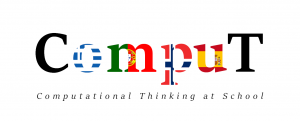Αρχική » 4. abstraction
Αρχείο κατηγορίας 4. abstraction
Dimensions of Computational Thinking in COMPUT project
When we started working on the project Computational Thinking at School, our plan was to study the following dimensions of Computational Thinking creative problem solving algorithmic approach to problem-solving problem solution transfer logical reasoning abstraction generalization representation and organization of data systemic thinking evaluation social impact of computation While working on the dimensions, it proved […]
BBC Abstraction test
Visit BBC site to take Abstraction test More tests on Computational Thinking by BBC
BBC Abstraction in practice
How to abstract Abstraction is the gathering of the general characteristics we need and the filtering out of the details and characteristics that we do not need. When baking a cake, there are some general characteristics between cakes. For example: a cake needs ingredients each ingredient needs a specified quantity a cake needs timings When […]
BBC Abstraction
What is abstraction? Abstraction is one of the four cornerstones of Computer Science. It involves filtering out – essentially, ignoring – the characteristics that we don’t need in order to concentrate on those that we do. In computational thinking, when we decompose problems, we then look for patterns among and within the smaller problems that make up the […]
Google / Abstraction
Facilitating Software and Game Development though Abstraction




